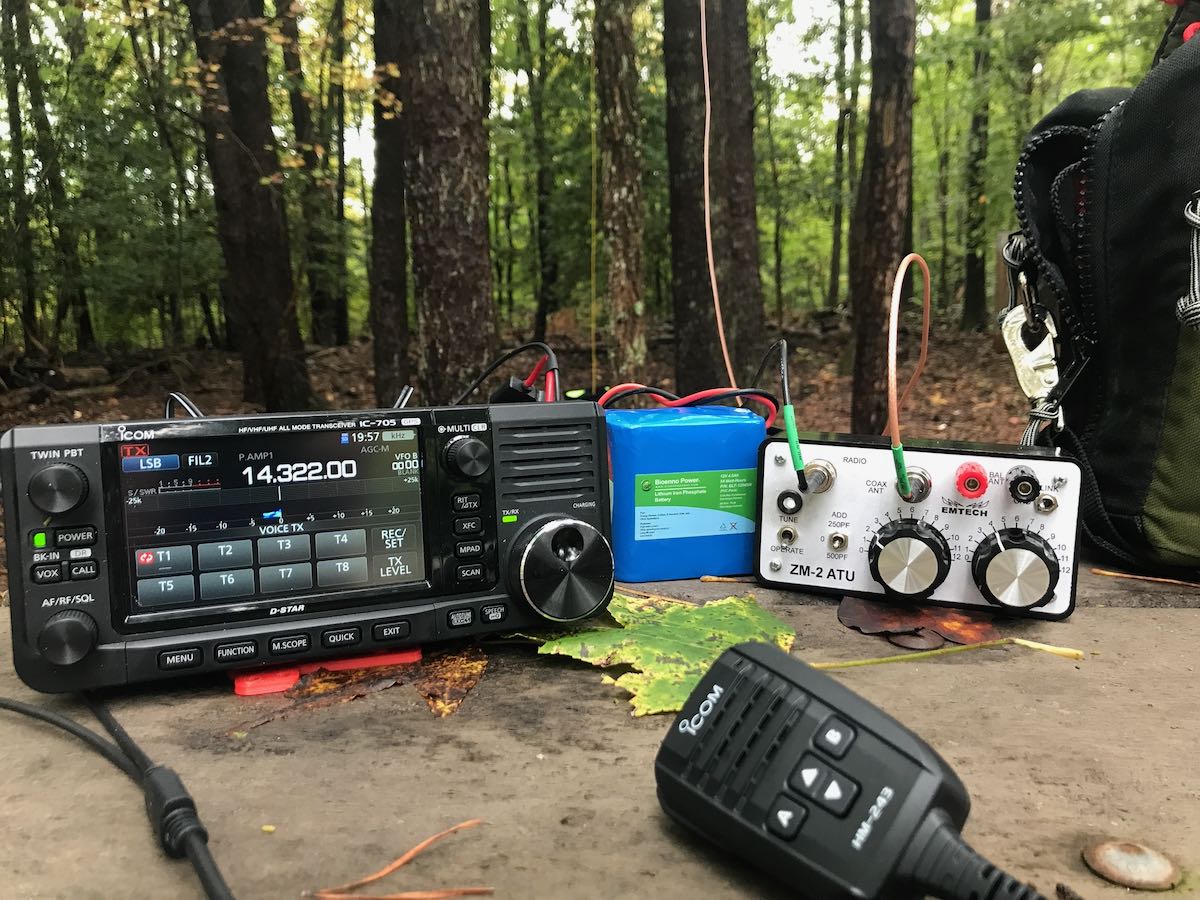 I’ve been using the Icom IC-705 pretty heavily since I took delivery of it a couple weeks ago.
I’ve been using the Icom IC-705 pretty heavily since I took delivery of it a couple weeks ago.
The more time I spend with this radio, the more I like it.
Serious functionality and features
I originally stated that I’d probably sell the IC-705 after my review/evaluation period because it simply doesn’t have the design characteristics I like in a field QRP radio.
I tend to prefer simple field radios with a basic high-contrast LCD or analog display, and a protective cover over the display. I’m not personally the biggest fan of pressure sensitive touch screens in field applications.
Earlier this week, I stopped by Lake Norman State Park for a quick Parks On The Air (POTA) activation.
I wrote a field report on QRPer.com noting the fact that the IC-705 is a superb SSB transceiver. It truly is. I included a video showing the IC-705 as I worked a few stations on the 40 meter band, and another video demonstrating SSB memory keying (politely overlook the fact I had the rig set to LSB on 20 meters in that video–!).
Listening in
 When I finish a park activation, I often spend a little time on the broadcast bands tuning around and enjoying the low-RFI setting.
When I finish a park activation, I often spend a little time on the broadcast bands tuning around and enjoying the low-RFI setting.
At Lake Norman, I decided to make a short video highlighting the wide receiving range of the IC-705. The video only highlights a few bands–the IC-705 can actually receive from 0.030–199.999 MHz and 400.000–470.000 MHz.
The EFT-MTR end-fed antenna I had connected to the IC-705 that day was not ideal for reception above 15 MHz, but as you’ll see, it was adequate for a little radio fun. I was using the Emtech ZM-2 external antenna tuner that day because my mAT-705’s battery died. I highly recommend the ZM-2 for shortwave listeners and QRPers alike because it makes it so easy to tweak wire antennas for optimal matching and reception. In the video, however, I left the tuner in the last matched configuration. This isn’t exactly a pro video, but I hope you’ll enjoy it anyway:
The Icom IC-705: A keeper
This transceiver is so versatile, I don’t think I can let go of it. I really appreciate the IC-705’s frequency versatility and excellent performance. With this compact rig, I can do some proper SWL DXing and possibly even FM and MW DXing.
As simple as it is, the built-in digital recorder clinches the deal.
The IC-705 is a pricey piece of kit at $1300 US, but I suspect Icom will lower the price or start offering rebates once the supply/demand curves normalize. At present, retailers are struggling to keep up with customer demand and most purchases are on back-order.
Blind Audio Test results
I’ve just closed the surveys for our IC-705 blind audio tests. The response was overwhelming and the results? Well, you’ll soon find out. I hope to present all of the findings in a post within the next few days.
Boomark this link to follow all of our IC-705 posts.
Do you enjoy the SWLing Post?
Please consider supporting us via Patreon or our Coffee Fund!
Your support makes articles like this one possible. Thank you!












